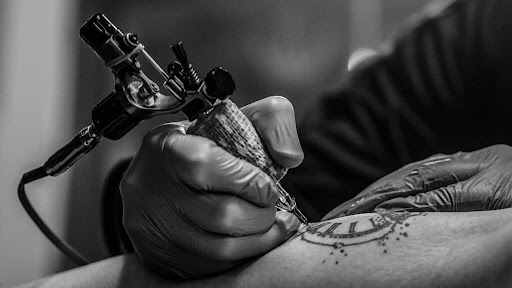From screen to skin: The process of bringing digital tattoo designs to life

In the modern world, tattoos have become a form of self-expression and art for many individuals. With advancements in technology, the process of getting a tattoo has evolved to include digital design elements. Bringing digital tattoo designs to life involves a fascinating journey from the screen to the skin, incorporating creativity, digital tools, and skilled tattoo artists.
Designing the Tattoo
The first step in the process is designing the tattoo. Many people now opt for digital designs created on computer software or graphic tablets. These designs allow for intricate details, precise lines, and vibrant colors that may be challenging to achieve with traditional pen and paper.
Digital designs offer the advantage of easy customization and editing, enabling clients to see a more realistic representation of how the tattoo will look on their skin. Tattoo artists can also easily resize, rotate, or make any necessary adjustments to the design before transferring it onto the skin.
This technology has revolutionized the tattoo industry, providing endless possibilities for creativity and ensuring that both the artist and the client are on the same page before the tattooing process begins.
Consultation with a Tattoo Artist
Once the digital design is ready, the next step is to consult with a tattoo artist. The artist will review the design, discuss placement on the body, size considerations, and any adjustments that may be needed for a successful tattoo application.
The tattoo artist will also advise on color choices and shading techniques to ensure the design looks its best on the skin. It is important to have open communication with the artist to make sure the final result is exactly what you envisioned.
Additionally, the artist may provide insights on how the tattoo will age over time and offer aftercare instructions to help the tattoo heal properly. Working closely with a skilled tattoo artist is crucial in bringing your digital design to life on your body.
Stencil Creation
After finalizing the design with the artist, a stencil of the tattoo is created using specialized transfer paper and a thermal printer. The stencil serves as a guide for the tattoo artist to ensure precision and accuracy during the actual tattooing process.
The stencil is placed on the desired area of the skin and carefully transferred onto the skin using a special gel or soap. Once the stencil is applied, the tattoo artist can then begin the tattooing process, following the lines of the stencil to create the design with ink. The stencil helps the artist to stay on track and avoid mistakes, resulting in a clean and well-executed tattoo.
Tattooing Process
With the stencil in place, the tattoo artist begins the tattooing process using tattoo machines equipped with needles that penetrate the skin to deposit ink. The artist follows the lines of the stencil while incorporating shading and color to bring the digital design to life on the skin.
This process requires precision and skill to ensure the final tattoo is true to the original design and meets the client’s expectations. The tattoo artist may need to switch between different needle configurations and ink colors to create varying textures and tones.
Throughout the tattooing process, the artist must maintain a steady hand and focus to achieve clean lines and blend colors seamlessly. Once the tattoo is complete, the artist will clean the area and apply a protective ointment to aid in the healing process.
Color and Detailing
Color plays a crucial role in enhancing the digital tattoo design. Tattoo artists use a variety of ink colors to create depth, dimension, and visual interest in the tattoo. Fine detailing and shading techniques further enhance the overall look of the design.
The choice of colors can evoke different emotions and convey specific meanings in a tattoo design. Warm colors like reds, oranges, and yellows can symbolize passion, energy, and happiness, while cooler colors like blues, greens, and purples can represent calmness, tranquility, and mystery.
By carefully selecting the right color palette and using different shades and tones, tattoo artists can bring a design to life and make it pop on the skin. Additionally, the contrast between light and dark colors can create a sense of depth and realism in the tattoo.
Incorporating colors strategically can also help to highlight certain elements of the design and draw attention to specific areas. Whether it’s a vibrant rainbow, a subtle watercolor effect, or a bold black and grey piece, color plays a key role in making a tattoo stand out and become a unique piece of art.
Healing and Aftercare
After the tattooing process is complete, proper healing and aftercare are essential to ensure the longevity and vibrancy of the digital design. Tattoo recipients must follow the artist’s instructions for cleaning, moisturizing, and protecting the tattooed area to promote healing and prevent infections.
Advancements in Digital Tattoo Technology
With the rise of digital tattoo designs, technology has also played a significant role in enhancing the tattooing process. Advancements such as digital tattoo machines, color-mixing software, and 3D tattooing techniques have revolutionized the industry, providing artists with more tools and techniques to create stunning designs.
Final Thoughts
Bringing digital tattoo designs to life is a creative and collaborative process that combines the best of digital artistry and traditional tattooing. From intricate designs on the screen to vibrant artworks on the skin, the journey of transforming digital concepts into permanent tattoos is a testament to the fusion of technology and art in the modern world.



